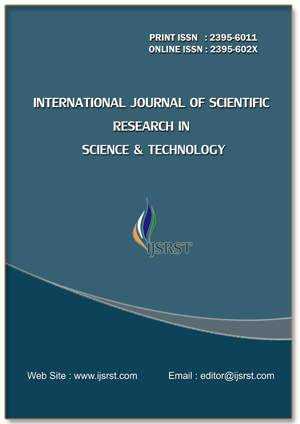A Comparative Study on the Impact of Speed on Handwriting Characteristics Concerning Age
DOI:
https://doi.org/10.32628/IJSRST251222690Keywords:
handwriting analysis, graphic maturity, writing speedAbstract
Handwriting is a highly complex motor skill that has long fascinated researchers and forensic experts alike. This study investigates how writing speed affects handwriting after an individual reaches’ graphic maturity. Graphic maturity refers to the stage where handwriting becomes a mostly automatic process, requiring minimal conscious effort. The research involved collecting handwriting samples from individuals across different age groups, written at varying speeds. These samples were then examined to identify changes in both class characteristics (e.g., slant, spacing, size) and individual characteristics (e.g., specific strokes, pressure, unique formations). The analysis revealed that speed significantly influences handwriting features. In many cases, increased writing speed led to noticeable alterations in class characteristics, which in turn affected the visibility and stability of individual characteristics. One of the key findings is that these shifts can actually help forensic experts isolate unique traits specific to the writer, enhancing the accuracy of forensic handwriting analysis. A visual representation of these changes helped simplify complex data, making it more accessible for practical application. This study contributes to forensic science by providing deeper insight into how writing speed influences handwriting features, aiding the identification and verification process in criminal and civil cases.
Downloads
References
Baker JN. Law of Disputed and Forged Documents. The Mitchie Company: Charlottesville, VA, 1955.
Bradford RR, Bradford RB. Introduction to Handwriting Examination and Identification. Nelson-Hall: Chicago, IL, 1992.
Osborn AS. Questioned Documents, Second Edition. Nelson-Hall: Chicago, IL, 1929. Saudek
R. Experiments With Handwriting, Books for Professionals: Sacramento, CA, 1978.
Alexander, G. E., Crutcher, M. D., and DeLong, M. R. 1990. Basal ganglia-thalamocortical circuits: Parallel substrates for motor, oculomotor, “prefrontal” and “limbic” functions.
Progressive Brain Research 85:119–146.
Alexander, G. E., DeLong, M. R., and Strick, P. L. 1986. Parallel organization of functionally segregated circuits linking basal ganglia and cortex. Annual Review of Neuroscience 9:357– 381.
Bloesch, E. K., and Abrams, R. A. 2010. Visuomotor binding in older adults. Brain and Cognition 74:239–243. Boisseau, M., Chamberland, G., and Gauthier, S. 1987.
Shinohara, M., Scholtz, J. P., Zatsiorsky, V. M., and Latash, M. L. 2004. Finger interaction during accurate multi-finger force production tasks in young and elderly persons.
Experimental Brain Research 156:282–292.
Smyth, M. M., and Silvers, G. 1987. Functions of vision in the control of handwriting. Acta Psychological 3:276–315.
Van Drempt, N., McCluskey, A., & Lannin, N. A. (2011). A review of factors that influence adult handwriting performance. Australian occupational therapy journal, 58(5), 321-328.
Cohen, M. R. (1997). Individual and sex differences in speed of handwriting among high school students. Perceptual and motor skills, 84(3_suppl), 1428-1430.
Graham, S., Weintraub, N., & Berninger, V. W. (1998). The relationship between handwriting style and speed and legibility. The journal of educational research, 91(5), 290- 297
Peverly, S. T. (2006). The importance of handwriting speed in adult writing. Developmental Neuropsychology, 29(1), 197-216.
Graham, S., Berninger, V., Weintraub, N., & Schafer, W. (1998). Development of handwriting speed and legibility in grades 1–9. The Journal of Educational Research, 92(1), 42-52.
Orliaguet, J. P., & Boë, L. J. (1993). The role of linguistics in the speed of handwriting movements: Effects of spelling uncertainty. Acta Psychologica, 82(1-3), 103-113.
[CRC PressK. Franke, "Capturing Reliable Data for Computer-Based Forensic Handwriting Analysis II: Pen-position Activations," 2009 10th International Conference on Document Analysis and Recognition, 2009, pp. 1310-1314, 10.1109/ICDAR.2009.255]
Koppenhaver, K. M. (2007). Forensic document examination. Humana Press Incorporated.
Downloads
Published
Issue
Section
License
Copyright (c) 2025 International Journal of Scientific Research in Science and Technology

This work is licensed under a Creative Commons Attribution 4.0 International License.
https://creativecommons.org/licenses/by/4.0





